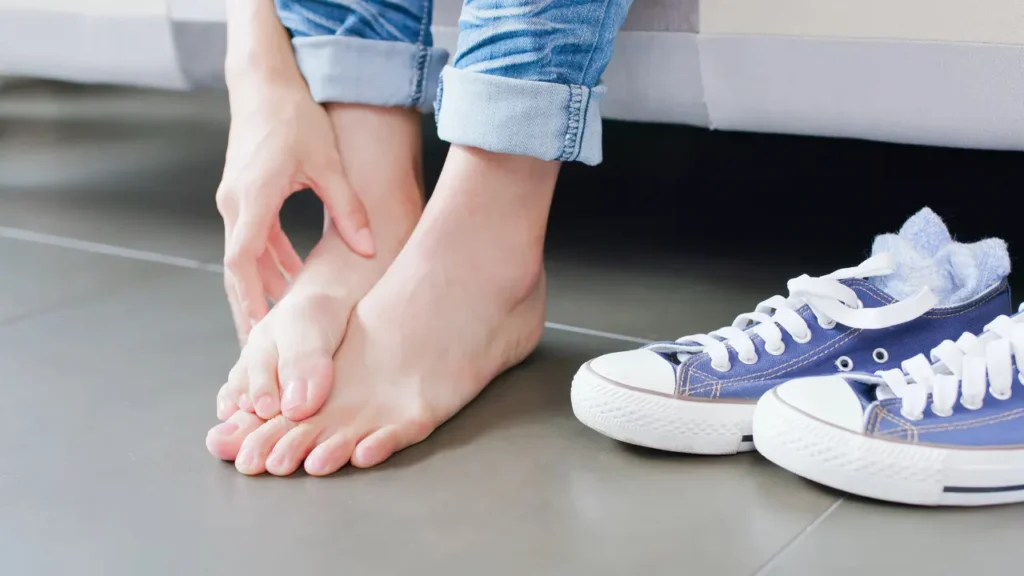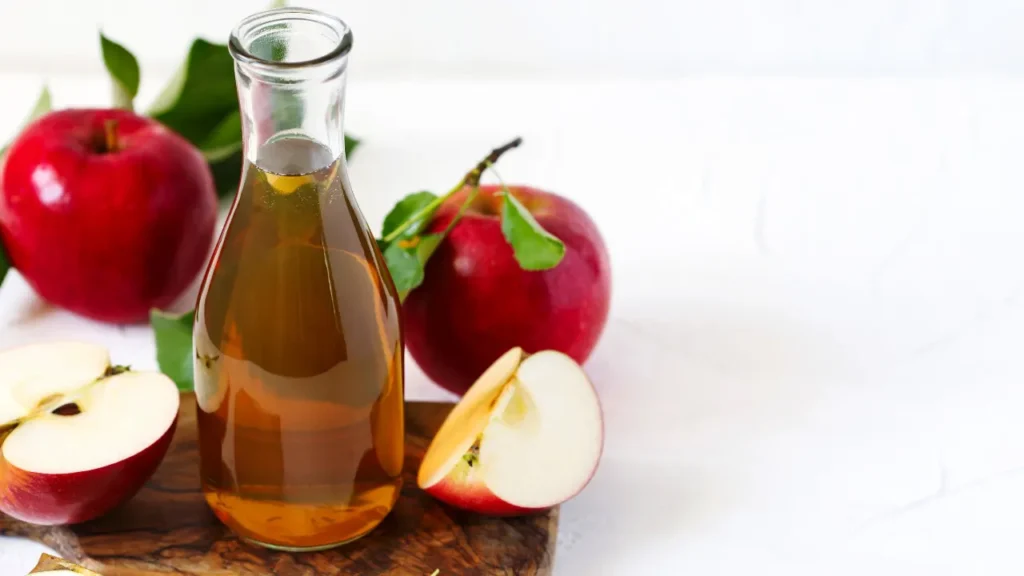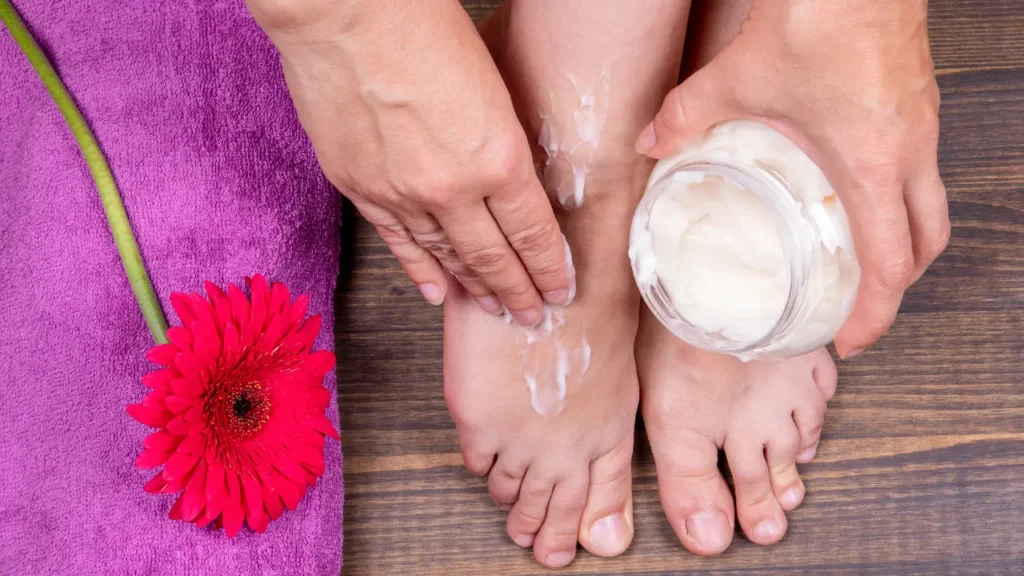Description
A class of fungus known as dermatophytes, which grow in warm, wet settings like sweaty socks and shoes, are the primary cause behind athlete’s foot. The fungus produces itching, redness, and scaling after invading the epidermis of the skin. Onychomycosis is a condition where the fungal infection has extended over the toenails which then thickened and discolored them.
According to the kind of fungus involved and the severity of the illness, athlete’s foot can manifest itself in a variety of ways. The skin between the toes, particularly between the fourth and the fifth toes, is affected by the most prevalent form, interdigitaltinea pedis. The damaged skin might form small blisters or fissures, and become itchy, red, and dry. When the condition is severe, the skin can rupture and bleed, which increases its susceptibility to bacterial infections.
Alternative forms of athlete’s foot are vesicular tinea pedis, which manifests as a rash of blisters filled with fluid affecting the soles, instep, and sides of the feet. There is also another type known as moccasin tinea pedis, affecting the sides and soles of the feet.
You May Also Like:
HOO RAA CBD VS PARTNERED PROCESS CBD
SMILZ CBD GUMMIES VS PARTNERED PROCESS CBD GUMMIES
Athlete’s foot: Description, Causes, and Treatment Protocol is an original (HealthXWire) article.
Possible Causes
Numerous fungi species, such as Trichophyton, Microsporum, and Epidermophyton which favor moist, warm conditions are responsible for the development of athlete’s foot. Through contact with infected objects like towels, shoes, and floors, athlete’s foot is contagious and may pass from one person to another.
Exacerbating and Mitigating Factors
Several factors may cause athlete’s foot more likely to occur or worsen an existing infection.
Weakened immune system: Athlete’s foot is more common in those whose immune systems are compromised, particularly individuals suffering from diabetes or HIV.
Warm and moist environments: As mentioned, the causative fungi flourish in warm, humid conditions like wet shower floors, sweaty shoes and socks, and damp benches within the gym.
Poor hygiene: Poor hygiene may cause the bacteria and fungi to flourish thereby worsening the existing condition.
Age: Older people are more likely to develop athlete’s foot due to poorer circulation and delayed skin cell renewal.
Gender: It is possible that males sweat more frequently and are more inclined to wear close-fitting shoes than women, which increases their risk of developing athlete’s foot.
Mitigating factors or prevention care are listed below:
Keeping the feet clean and dry: This entails routinely changing shoes and socks, cleaning the feet with water and soap on a regular basis, and properly drying them shortly thereafter after bathing or swimming.
Wearing breathable socks and shoes: It’s crucial to wear socks and shoes that enable the feet to breathe to ensure moisture does not build up on the feet. Shoes that are crafted with breathable fabrics like leather or canvas. is better than shoes with synthetic materials like rubber or plastic as the latter cause the feet to heat up and sweat excessively.
Disinfect surfaces: Shower floors, benches in the changing rooms, and other areas that are contacted by bare feet should all be cleaned.
Practice good hygiene: Rubbing or scratching the infected region needs to be avoided.
Avoid sharing personal items: Towels, socks, shoes, and other private belongings used on the foot should never be shared.

Standard Treatment Protocol(s)
Antifungal drugs that can be used topically or ingested are the conventional treatment for athlete’s foot. Creams, sprays, ointments, and powders are among the over-the-counter (OTC) and prescription topical antifungal treatments available. These drugs work by inhibiting the growth of fungus and slowly eradicating it from the skin.
Common antifungal medications used to treat athlete’s foot include: –
Clotrimazole
Clotrimazole is offered both in over-the-counter and prescription-strength ointments and creams. It may be used topically to the afflicted region and acts by creating holes in the fungal cell membrane which eliminates the fungi and halts the spread of the infection.
Terbinafine stops fungal biosynthesis and hence helps the eradication of the disease. It is sold as oral medicine or topical cream. Oral terbinafine is typically recommended for severe forms of athlete’s foot or infestations that don’t respond to topical medications
Miconazole is available without a prescription or over-the-counter. It can be used topically on the afflicted region and inhibits key enzymes for fungal survival.
Prescription Medications: Athlete’s foot may be treated with a number of prescription drugs in conjunction with clotrimazole, terbinafine, and miconazole. These consist of: –
- Ketoconazole
Ketoconazole is frequently administered for treating severe or persistent instances of athlete’s foot. It also acts by preventing ergosterol synthesis in fungi which inhibit the growth and spread of athlete’s foot.
- Naftifine
Both oral and topical forms of the antifungal drug naftifine are available. It is often used for treating persistent or serious instances of athlete’s foot and operates by preventing the spread of the fungi responsible for the infection.
- Fluconazole
An antifungal drug called fluconazole can be administered intravenously or orally. It is often used for treating severe or persistent instances of athlete’s foot as fluconazole disrupts the formation of fungal membranes therefore preventing its proliferation which leads to the infection.


Treatment Options
There are multiple other treatment options available for athlete’s foot along with typical regimens as supplementary therapies that support the former treatment. These involve nutritional supplements, natural remedies, and herbal remedies.
Nutritional supplements: Athlete’s foot may respond well to some nutritional supplements because they may improve immune function and encourage healing. These supplements might contain omega-3 fatty acids and probiotics in addition to vitamin C, vitamin D, selenium, and zinc. Before consuming any supplements, it’s crucial to speak with a doctor because some supplements may react with the existing prescriptions and may lead to unwanted side effects.
Natural remedies: Athlete’s foot can be treated with various natural remedies, both separately and in conjunction with standard therapies. They consist of: –
- Garlic
Owing to its inherent antifungal characteristics, garlic may help treat athlete’s foot. A handful of garlic cloves should be crushed, then a paste should be made with olive oil. After applying the paste to the troublesome area, wait for thirty minutes before washing it off.
- Tea tree oil
Athlete’s foot may respond well to tea tree oil, a natural antibacterial and antifungal essential oil. Tea tree oil should be diluted in any carrier oil, like olive oil or coconut oil, before being applied to the affected region twice a day.
- Apple cider vinegar
Due to its inherent antifungal characteristics, apple cider vinegar can assist in decreasing inflammation and itching. The solution must be applied to the afflicted region with a cotton swab after combining equal quantities of water and apple cider vinegar. Then, it should be washed off after ten to fifteen minutes of usage.
- Baking soda
Athlete’s foot irritation and itching may be alleviated with baking soda. A paste needs to be made by combining a few tablespoons of powdered baking soda and warm water. The paste should be applied to the infected region and then must be left there for ten to fifteen minutes prior to washing.
Herbal remedies: Athlete’s foot can be treated with a variety of herbal medicines, either by itself or in conjunction with more conventional methods. Some of these include: –
- Calendula
Owing to its inherent antifungal and anti-inflammatory characteristics, calendula may be able to calm irritated skin and speed up the healing process. The afflicted area can be applied with calendula ointment or cream every 2 days.
- Goldenseal
The plant known as goldenseal has natural antibacterial and anti-inflammatory qualities, which may help treat athlete’s foot. You can consume goldenseal extract or apply it topically on the affected region.
- Echinacea
Echinacea is a popular herb used to enhance immune system health and possibly shield against infections. Similar to goldenseal, you can consume echinacea extract or apply it directly to the affected region.
- Licorice
Due to its inherent antifungal and anti-inflammatory qualities, licorice may help lessen athlete’s foot-related itching and inflammation.
It is crucial to remember that although these natural and herbal treatments for athlete’s foot might prove beneficial, they shouldn’t take the place of standard treatment protocol. A healthcare practitioner should be consulted before utilizing any herbal or natural therapies because they could interact negatively with prescription drugs or have other unintended effects.


Conclusion
If you don’t change your socks often and often allow your feet in sweaty and wet conditions, you should be aware of athlete’s foot. This condition is a fungal infection caused by dermatophytes that invade the epidermis of the skin. Athlete’s foot may manifest in small blisters or fissures that are itchy, red, and dry. This condition can be easily controlled with a multifaceted approach, however, a continuous effort is crucial for successful management.
Patients need to maintain good foot hygiene, keep their feet dry, and use antifungal creams to prevent spreading and alleviate symptoms. In more severe instances, oral antifungal medications may be prescribed. As mentioned, since athlete’s foot is often recurrent, ongoing self-care practices and a collaborative partnership between patients and healthcare providers should be established.


Additional resources for further reference
https://www.mayoclinic.org/diseases-conditions/athletes-foot/symptoms-causes/syc-20353841
https://www.aad.org/public/diseases/a-z/athletes-foot-prevent
https://www.cdc.gov/healthywater/hygiene/disease/athletes_foot.html
https://my.clevelandclinic.org/health/diseases/22139-athletes-foot-tinea-pedis
Important Note: The information contained in this article is for general informational purposes only, and should not be construed as health or medical advice, nor is it intended to diagnose, prevent, treat, or cure any disease or health condition. Before embarking on any diet, fitness regimen, or program of nutritional supplementation, it is advisable to consult your healthcare professional in order to determine its safety and probable efficacy in terms of your individual state of health.
Regarding Nutritional Supplements Or Other Non-Prescription Health Products: If any nutritional supplements or other non-prescription health products are mentioned in the foregoing article, any claims or statements made about them have not been evaluated by the U.S. Food and Drug Administration, and such nutritional supplements or other health products are not intended to diagnose, treat, cure, or prevent any disease.
Table of Contents


